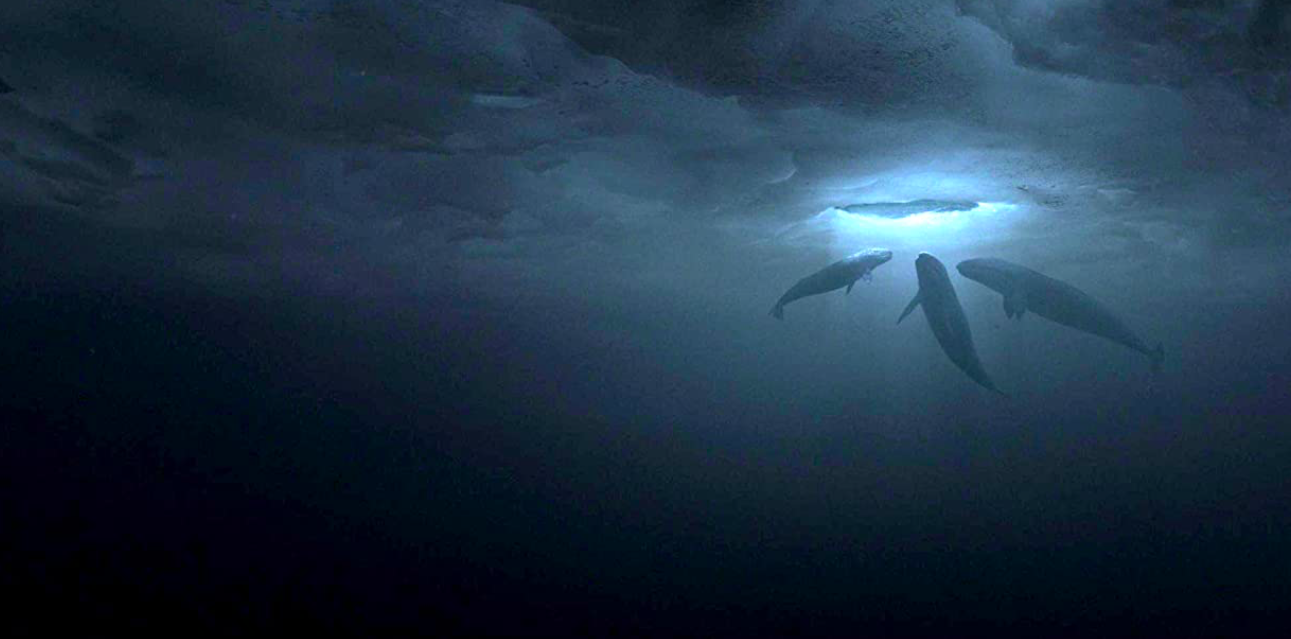”And we ache for them cause they are so much like us”.
Rachel Kramer.
The film Big Miracle is a drama directed by Ken Kwapis and distributed by Universal Pictures in 2012. It is based on the book Freeing the Whales written by Tom Rose in 1989, which narrates the 1988 Operation Breakthrough to rescue grey whales trapped in Alaska.
The film follows the reporter Adam Carlson, and his Greenpeace volunteer activist ex-girlfriend Rachel Kramer on their campaign to save a family of three grey whales trapped by forming ice during their annual migration to a lagoon in Mexico. The film is set in Barrow, a small town in the Arctic Circle.
Media opportunism, political scepticism, native traditions of the inhabitants of this small town in Alaska and the stubbornness of Greenpeace environmental activists interferes with the rescue. The controversy of oil companies and the Reagan Administration being involved in the mission adds to the thrill of the story, making the film more than just a good adventurous story.
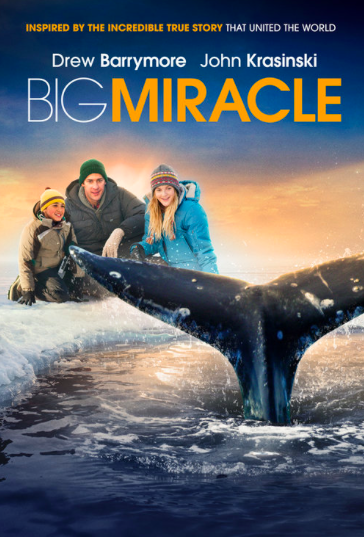
Figure 1: Film cover
Despite the fact that the whales are off-camera most of the time and only appear when they come to the small circle in the surface to breathe, they play an important role as they brought together an inconceivable group of allies for a common cause. Nonetheless, most of the reporters, the executive from the Alaska Northern oil company and the US President are primarily taking part in the rescue not because they care about the whales but for their own benefits and global attention. Human selfishness is the sole reason they want to rescue the whales because the perception of a good reputation will cast aside the public image of environmental villainy they have gained across the country. Contrastingly, Rachel’s genuine concern and activism is portrayed by her will to move heaven and earth in order to immediately find a solution to protect endangered whales, despite not knowing of the tragedy of the three whales trapped in Barrow.
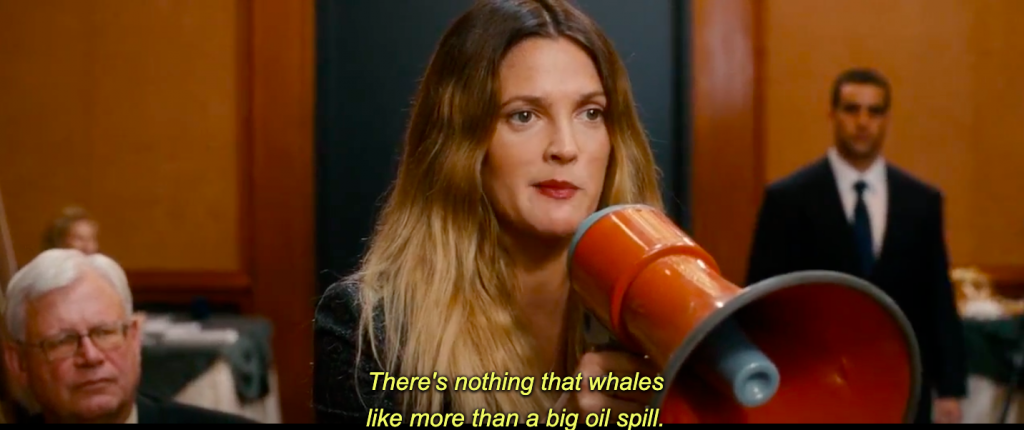
Figure 2 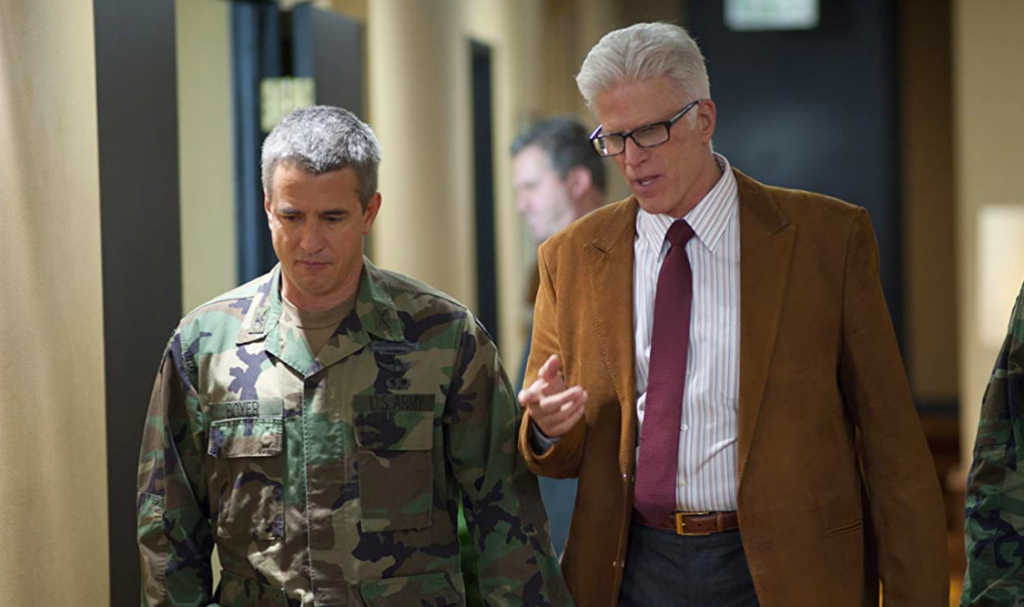
Figure 3: Colonel Boyer and J.W. McGraw
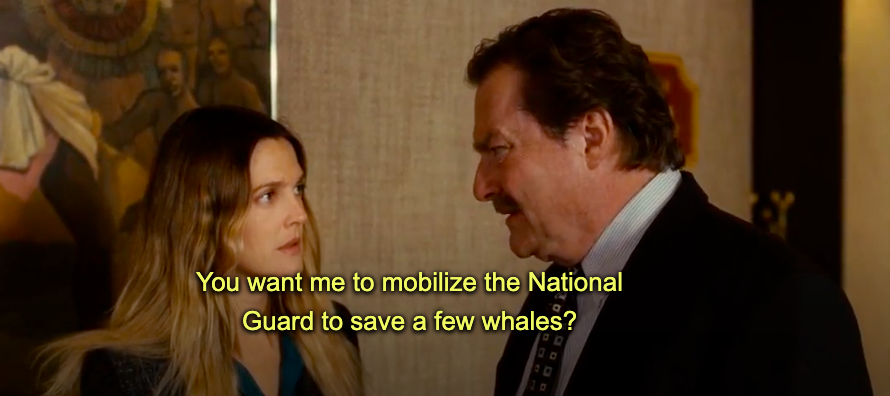
Once Rachel finds out the news, she comes up with the idea of mobilising the National Guard to the Coast of Barrow with a ship that can break through the ice. She tries to get the help from Governor Haskell and her conversation with him brings out two different perceptions of the whales. Rachel talks about the whales as if she was talking about a human being whereas Haskell’s adopts an anthropocentric perspective in his discourse as, by his statement (seen in the quote under the image), he thinks humans are more important than other species such as animals in this case, thus superior to them. If it would have been a human family trapped in the ice, he would have taken any risk to save them but as it is whales they are talking about, he has completely turned his back on the matter.
‘’When a whale dies, Miss Kramer, you do not have to tell its wife and children.’’
Gov. Haskell
Human hypocrisy is seen through Haskell’s attitude; despite the fact he has laughed at Rachel’s plan of calling the National Guard and bringing a ship that will break the ice, his public opinion suddenly changes. The only reason he has now agreed on participating is simply because other parties such as the White House and oil companies have started taking action. The Governor only shows mercy for the whales in the presence of media, hence he is faking his interest on saving them. Usually when politicians from two different parties are seen publicly signing a deal, they shake hands and this is what the Governor does in this scene but instead of shaking hands with another human he does it with a human that is dressed up as a whale. This is an ironic moment that portrays how such a powerful man is taking away the real importance of the matter while also shows the ignorance of some human beings.

Figure 5
Different worlds collide in the saving process of the whales, mainly the ones from The Inupiat people and Greenpeace activists. A reunion between Rachel and the whaling captains of Barrow takes place in order to decide the destiny of the whales. The Inupiat are the native people from the Alaskan villages that form part of the United-States/Canada border. They still rely on subsistence hunting animals such as seals, fish and whales. Roy, the whaling captain, affirms that they do not do this as a sport according to Rachel but to harvest them for food. As believed by him, ”The whale chooses the whaler and they have chosen us” and the Inupiat country respects the whales and the ocean. For this reason, the inhabitants of this small town along with the whaling captains do not see it necessary to work on saving these whales. Instead, their plan is to hunt them because that is how they have been living for generations and they believe it is their responsibility to show and teach younger people how to do it; otherwise they would not be able to survive and feed their families in the future. This exposes the human-wildlife coexistence in places like Barrow.
The tribe feels threatened by people that do not understand them. The Inupiat community has depended on the whales for years so they refuse to change their way of living as that would mean their dogmatic traditions would completely disappear.
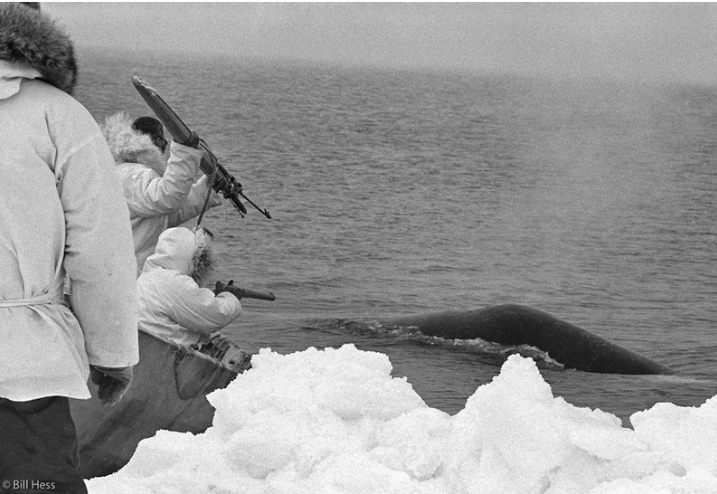
Figure 6: Whale hunters in the Arctic in 1987 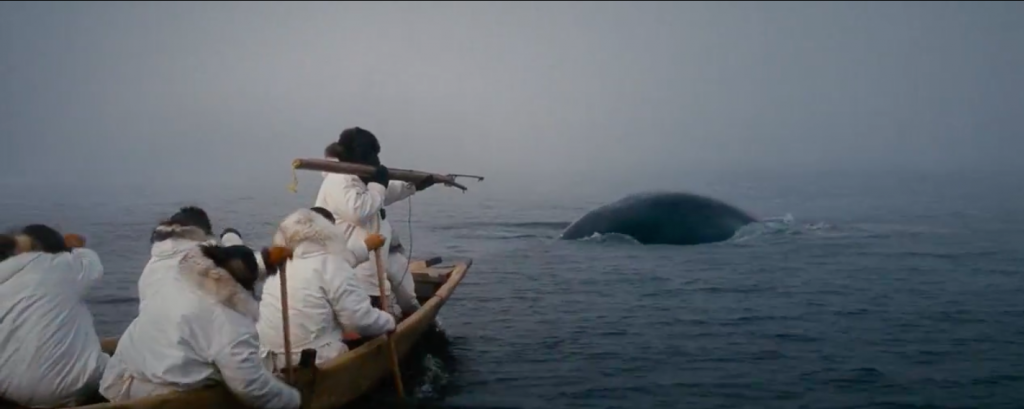
Figure 7: Inupiat people hunting a whale in the opening scene
Malik, one of the eldest in the Inupiat community, is a former believer of these traditions and has been trying to keep the olds ways of his tribe alive. He has done it mainly through educating his grandson hoping he will live according to them. Notwithstanding, he realises how his grandson is more interested in Walkmans, batteries, music and seeing what the rest of the world has to offer. As this being one of the main motives, Malik gives in into the option of freeing the whales.
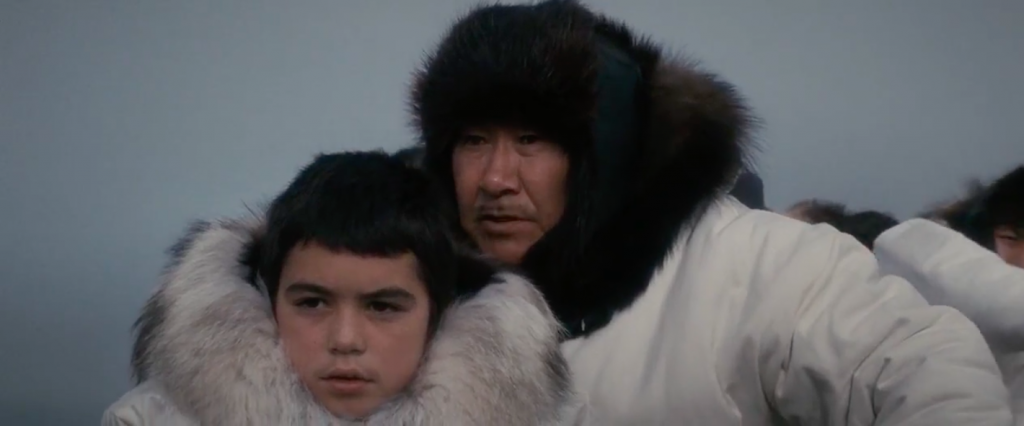
Figure 8: Malik teaching his grandson how to hunt a whale 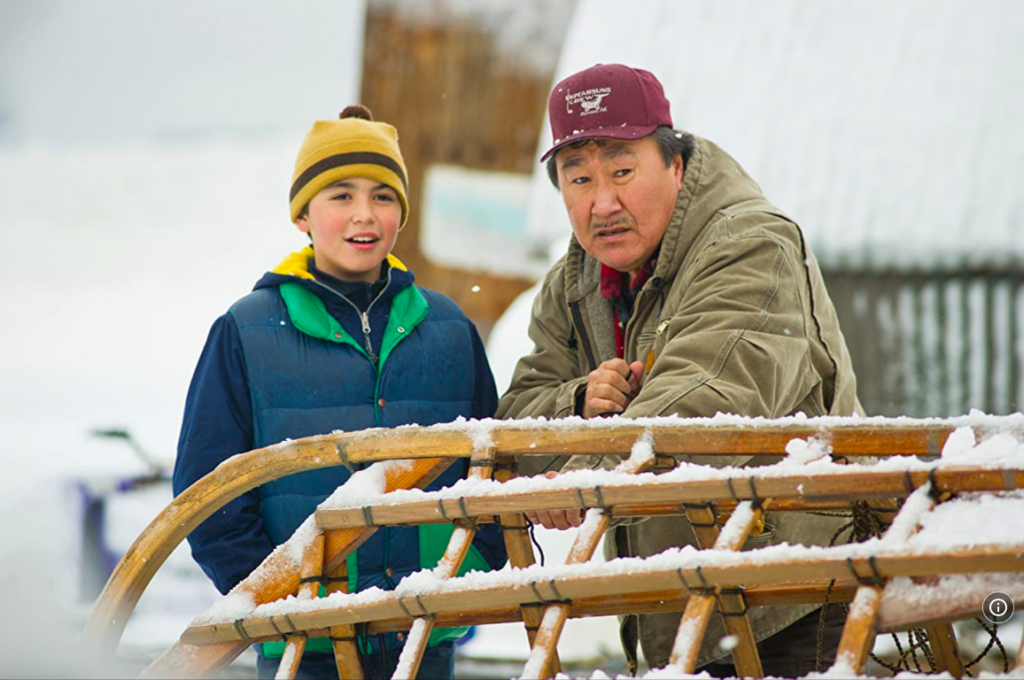
Figure 9 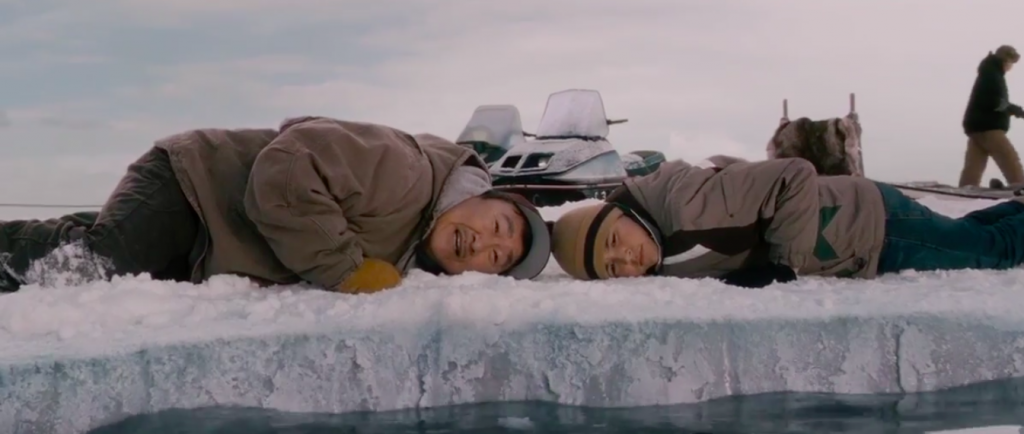
Figure 10: Malik trying to show his grandson how the mother whale talks to her baby
Adam is also a character that genuinely cares about the whales. This is seen, for instance, in the moment in which he gives each whale a name. When he first encounters the whales, he identifies them thanks to the use of numbers. Depending on when they leave the surface to breathe, they are either number one, two or three. But this changes as he spends more time with them. He names the adult male whale as Fred, the female whale is called Wilma and finally the baby one is known as Bamm- Bamm. The choice of these names is interesting as they are the names of one of the families from The Flintstones animated TV show. Giving them a human name is an act of endearment towards the whales and he is not only drawing them closer to him but also to the audience and the rest of the people involved. This shows how much he cares for them and how he is able to recognise each of them individually and not just as a group or number anymore. Naming, thus, leads to an increase of attachment, empathy and direct connection with the whales.
In Rachel’s first encounter with the whales, Adam introduces them to her one by one and as soon as she says hi they make a noise that means they are greeting her back. The way this is captured in scene looks like a human-human encounter rather than a human-animal encounter as that is the way humans interact.
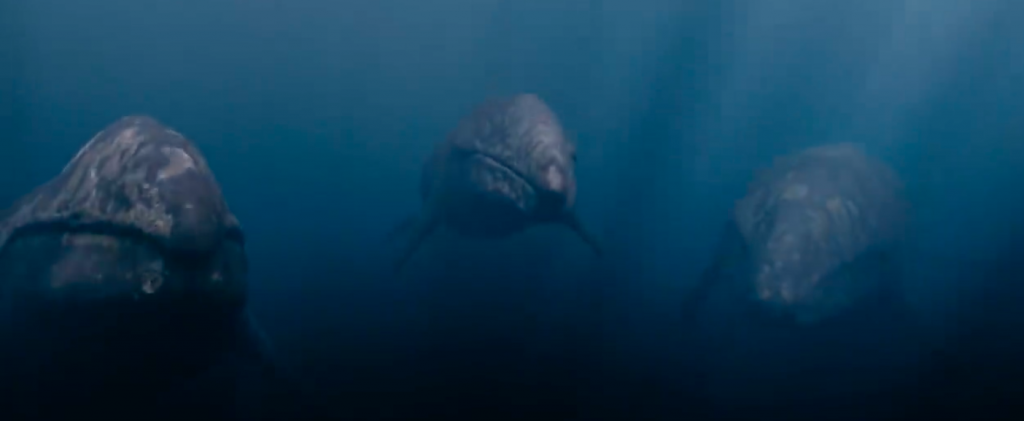
Figure 11: Fred, Wilma and Bamm-Bamm the whales 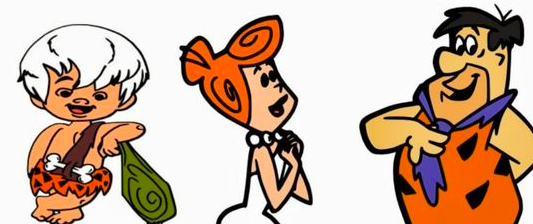
Figure 12: Bamm-Bamm, Wilma and Fred from The Flintstones show
Right after Rachel is informed that there is something off with Bamm-Bamm, she does not hesitate to go down there despite the warnings she has gotten. In the scene in which she goes deep down the water to swim with them, she demonstrates that in spite of the whales being wild animals, they are not dangerous creatures that want to hurt the human species. As soon as the whales allow her to get closer, Rachel hears Bamm-Bamm crying and she discovers that it is because he is entangled in a fishing net that is impeding him to get up to the surface to breathe. When she is out of the water, she tells Carlson and the state wildlife Official Pat Lafayette of how the baby was trapped in a net. It is interesting to mention that these two men react with surprise to the fact that a net could be in the ocean. Consequently, she proves how it is humans who are harming them. A product of human greed and inconsideration symbolised by the fishing net has caused harm to the whale. Rachels intimate moment underwater with just her and the whales emphasises that she is the leading force of the rescue and is prepared to put herself at risk to save the whales. Rachel educates Carlson on the problem of littering in the ocean and how it affects marine species. People littering in the ocean imposes threat on wildlife species as well as damaging their habitat and puts them at risk. Litter such as plastic bottles or bags, glass and nets is thrown in the ocean everyday. If these items entangle the sea animals, they have no chances to survive because the entanglement impedes them from breathing, from feeding themselves and even from escaping from other predators like polar bears. Probably if Rachel had not gone under the water, Bamm- Bamm would have died suffocated.
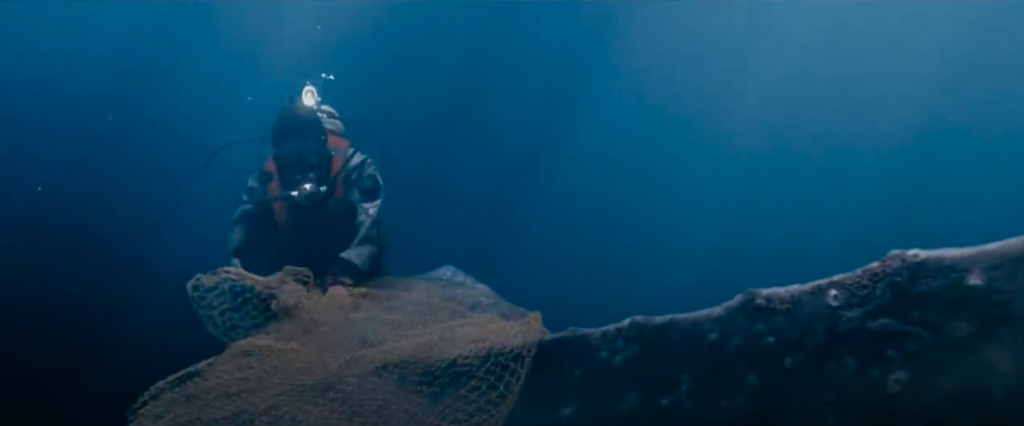
Figure 13: Rachel freeing Bamm-Bamm from a trapping net 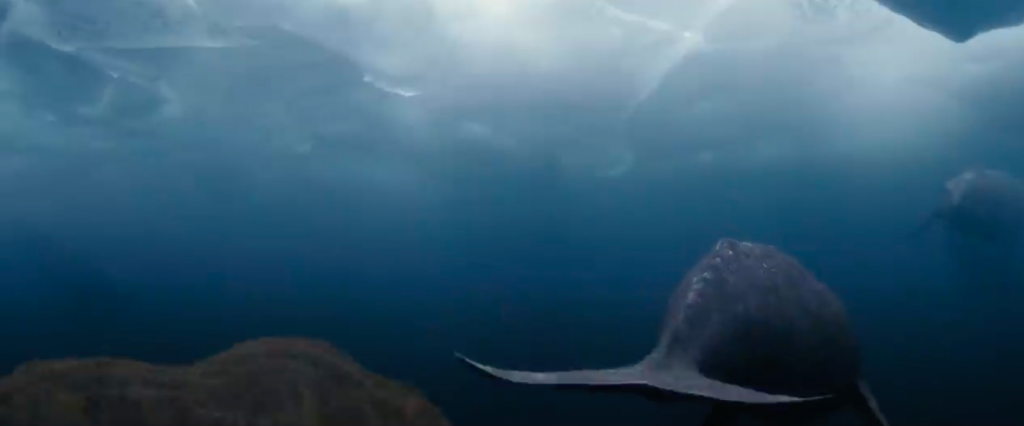
In addition to this, we also see how the closeness to the whales builds a strong connection between the animals and the human in this sequence. Both species are shown vulnerable as the camera zooms from a close-up of Rachel’s face to one of Bamm-Bamm’s. Their eyes show how defenseless they are in front of each other, and the difference between an animal and a human is blurred here and they are just portrayed as two equal beings trying to put themselves in the place of the other. With one look they seem to understand how the other is feeling.
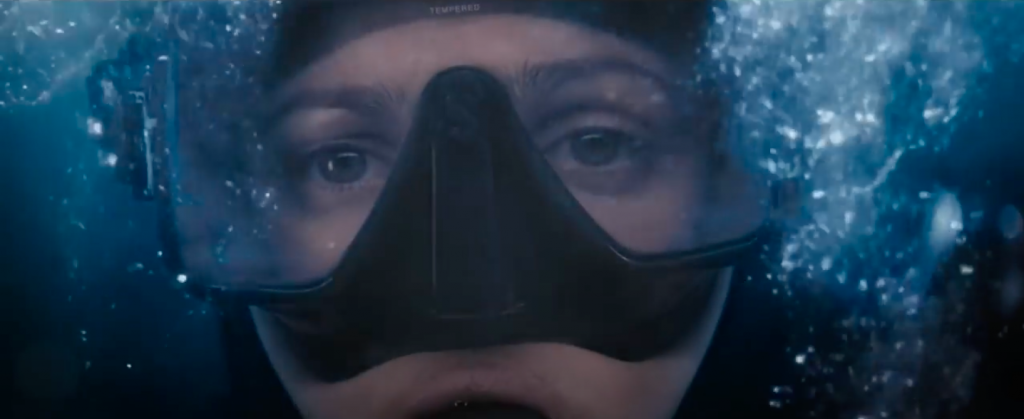
Figure 15: Close-up of Rachel’s face 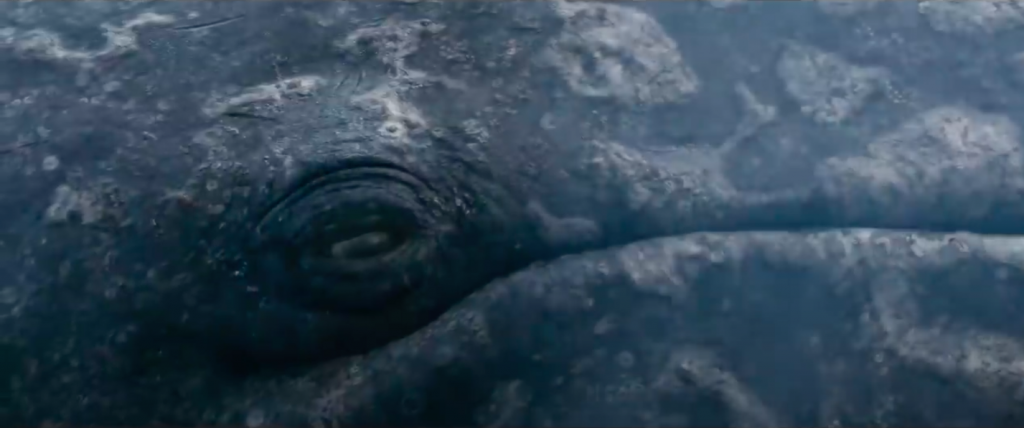
Figure 16: Close-up of Bamm-Bamm’s face 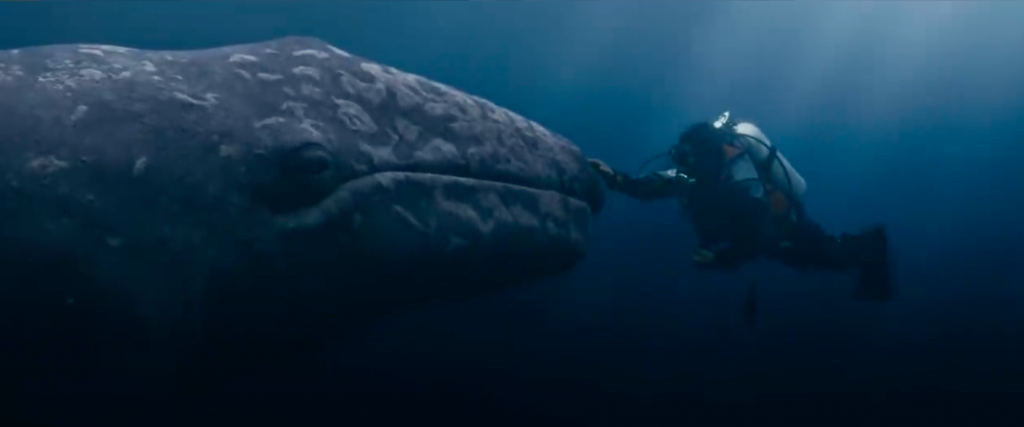
Figure 17: First encounter between Rachel and a whale
This scene adds some humour to the film and proves how whales can be able to perceive humans’ intentions towards them. In contrast to Bamm-Bamm’s intimate interaction with Rachel, he does not do the same with the executive J. M. McGraw when he does an appearance to ‘pretend’ that he is helping with the rescue process. McGraw wishes to portray himself as a hero; so when he sees himself surrounded by people he does not miss the opportunity to try to approach the animals. The only outcome he wants from this approach is to get a great amount of good footage of him and the whales. He makes an appearance and starts joking as if the situation was not serious. He talks to the whales in a superior way full of irony that the animals are able to detect. By splashing McGraw with water, Bamm-Bamm is defending himself and leaving him in evidence in front of the camera as he knows his true intentions are not good. Therefore, the scene also captures the whales’ intelligence.

Figure 18: Bamm-Bamm splashing water at Mc.Graw
The tension built up by the extreme low temperatures that make it difficult to maintain the hole open, what mean whales would die in no time, fits into the drama genre of the film.The await to see if the De-Icers invention made by two entrepreneurs from Minnesota works is long and a mechanism that functions as a tension increasing technique. Moreover, Bamm-Bamm’s death gives a plot twist to the course of the narrative of the film while it is also a warning from the director to show that sometimes by the time humans decide to take action, it can be too late. Perhaps if they had worried more about the whales since the beginning, the tragic dead of the baby Bamm-Bamm could have been prevented. Moreover, the fact that out of the three whales it is the baby one who dies is a shock that leaves more of an impact on the audience.
Moved by desperation, everyone agrees that they need the support from Russia if they want to rescue the whales, and finally, after a tense trial on breaking the ice with the barge, the Russians make it and so the whales are now fully able to breathe and swim. Human selfishness seen at the opening of the film disappears once the whales are freed and everyone, no matter which ones were their intentions at the beginning, is together celebrating. Moreover, the romance sub-genre is present through the whole film and it is the whales that serve as a force that has the power to unite Adam and Rachel again. The spark of love between these two slowly revives and grows as they spend more time together working to free the animals, in which they really get emotionally involved.
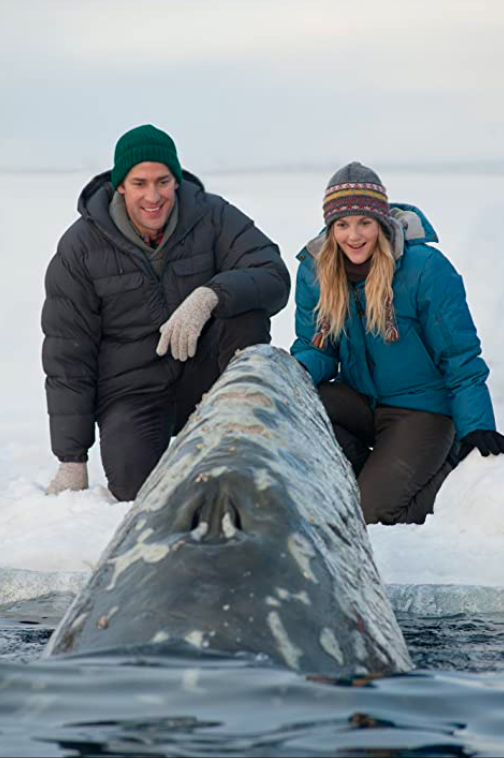
Big Miracle explores the truths and difficulties of the human-wildlife animals coexistence in a place such as Alaska while portrays the human being in all its facets and looks into human attitudes towards a whale.
REFERENCES
Figures
[1]: Film cover on Amazon Prime
[6]: Kunuk’s crew in 1987, photography taken by Bill Hess in ‘Real History Between the ”Big Miracle” story’, (2012)
[12]: The Flintstones SVG <craftingwithmeek.blogspot.com>.
[2],[3],[4],[5],[7],[8],[9],[10],[11],[13],[14],[15],[16], [17] & [19] are images taken from the film Big Miracle on Amazon Prime 2012.
Figure [18]: Julia 90skid in MOVIEGIFS <https://in-love-with-movies.tumblr.com/post/72447948504/big-miracle-usa-uk-2012> [accessed 14th January 2023]
Filmography
Kwapis, Ken. Big Miracle, <https://www.amazon.co.uk/Big-Miracle-Stephen-Root/dp/B00ESQDGKS> (Amazon Prime Video, 2012)
Hanna, William & Barbera, Joseph. The Flintstones, <https://www.youtube.com/watch?v=zm07wHG7-ok> (Youtube, 1960-1966).
Further Reading
European Agency Environment. 2014. ‘Well-being and the Environment- Litter in our Seas’. <https://www.eea.europa.eu/publications/signals-2014/close-up/litter-in-our-seas#:~:text=Many%20species%2C%20including%20seals%2C%20dolphins,from%20predators%20or%20feed%20themselves.> [accessed 17th January 2023]
Hess, Bill. 2010. ‘Real History Between the ”Big Miracle” Story’. <https://alaskapublic.org/2012/02/10/real-history-behind-the-big-miracle-story/> [accessed 17th January 2023]
Mauer, Richard. 2012. ‘ ‘Big Miracle’: The Real Story’. <https://www.adn.com/alaska-news/article/big-miracle-real-story/2012/02/03/> [accessed 17th January 2023]
Shoemaker, Nancy.2019. ‘Oil, Spermaceti, Ambergris, and Teeth: Products of the Nineteenth-Century Pacific Sperm-Whaling Industry’, RCC Perspectives nº5 17-22. <https://www.jstor.org/stable/26850617> [accessed 17th January 2023].
